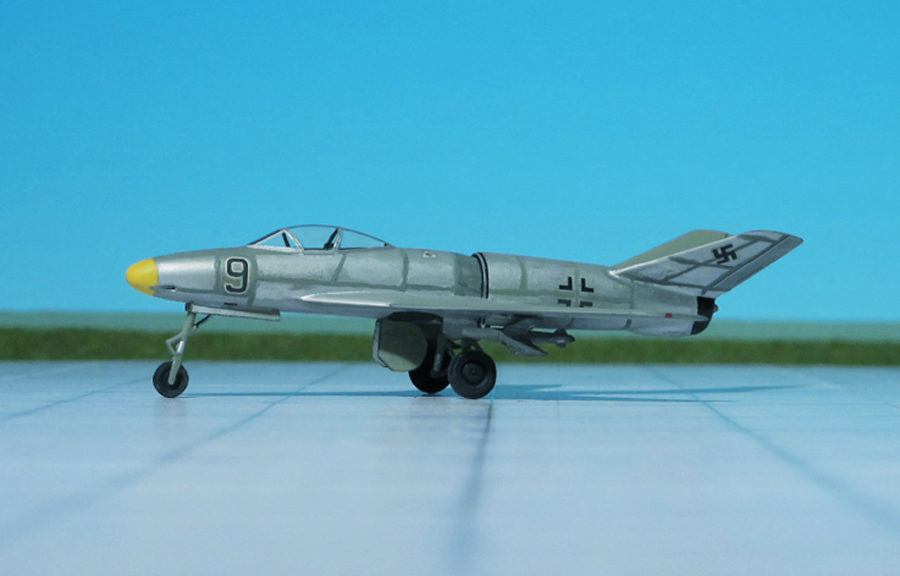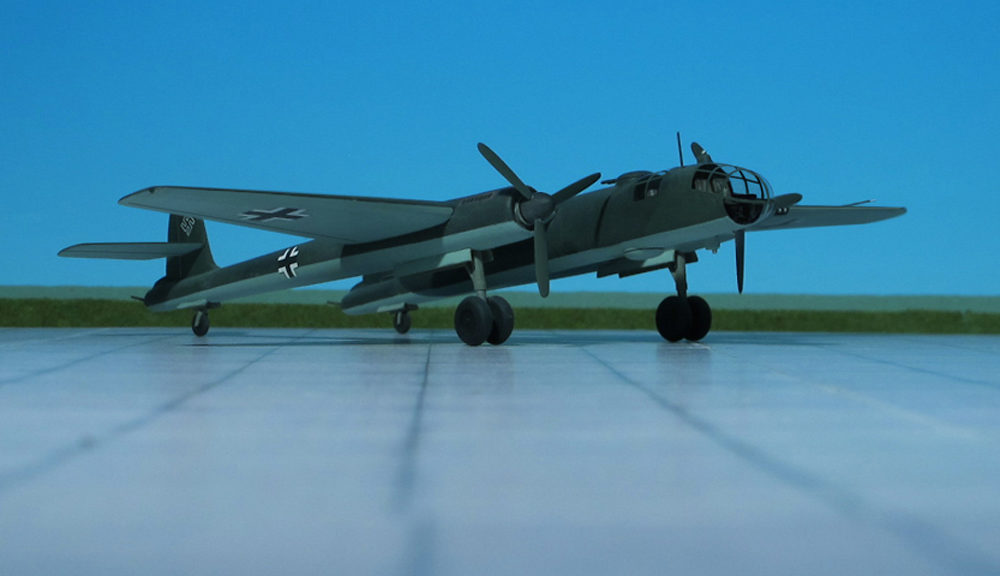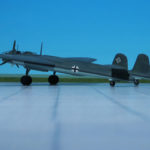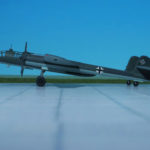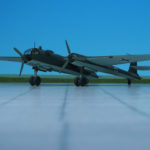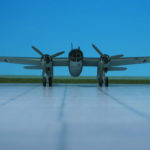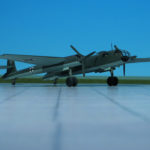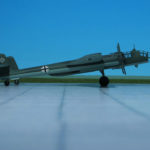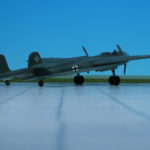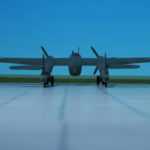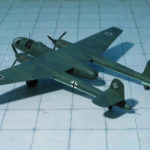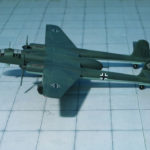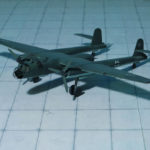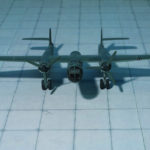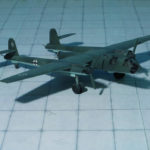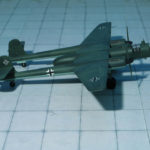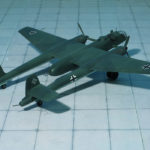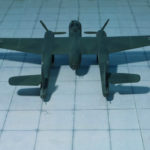TYPE: High altitude fighter
ACCOMMODATION: Pilot only
POWER PLANT: One Heinkel-Hirth HeS 011 turbojet engine, rated at 1,300 kp
PERFORMANCE: 630 mph
COMMENT: In Autumn 1944, in the context of the “Jägernotprogramm” (“Emergency Fighter Program”) the Oberkommando der Luftwaffe (OKL, Luftwaffe High Command) requested for proposals for a new generation of fighter/interceptor aircraft in order to replace the Heinkel He 162 “Salamander” or “Volksjäger” (“Peoples fighter”).
Besides designs such as Blohm & Voss Bv P.212, Focke-Wulf Ta 183, Heinkel He P. 1078, and Junkers EF 128 Messerschmitt proposed its project Me P. 1110 with three different variants.
First of the designs was the Messerschmitt Me P.1110/I, a turbo-jet powered interceptor with a conventional-looking design with the air intakes located in the middle part of fuselage sides above the wing the inlet not protruding the cross section (“Rampen-Einlauf”, “Ramp-air-intake”). The wing was of wooden construction and was swept back to 60 degree at the wing root and 40 degree at the leading edge. The tail plane was conventional with elevators and a vertical fin and swept back. Power was provided by a Heinkel/Hirth HeS 011 turbojet engine. A pressurized cockpit with streamlined fairing, tricycle landing gear and three MK 108 30mm cannon in the nose with a provision for two more in the wing roots was envisaged.
The second design was the Messerschmitt Me P.1110/II that differed from the Me P.1110/I mainly in a V-tail unit and a divided annular air intake behind the cockpit. The advantage of this unusual arrangement was that it would reduce drag by fifteen percent compared to a single nose air intake at the cost of four percent air flow reduction to the jet engines. To increase the air flow a supercharger was provided that additionally withdraw the boundary layer.
Like the Me P.1110/I, the Me P.1110/II had 40 degree swept-back wings, an HeS 011 jet engine and was armed with three MK 108 30mm cannon in the nose with a provision for two more in the wing roots.
The third design the Messerschmitt Me P.1110 “Ente” was of canard configuration with small wings in the front and larger wings in the rear part of the fuselage.
All projects would be soon dropped in favor of the Junkers EF 128 and none of the Messerschmitt designs made it to the prototype stage. (Ref.: 20, 22).
